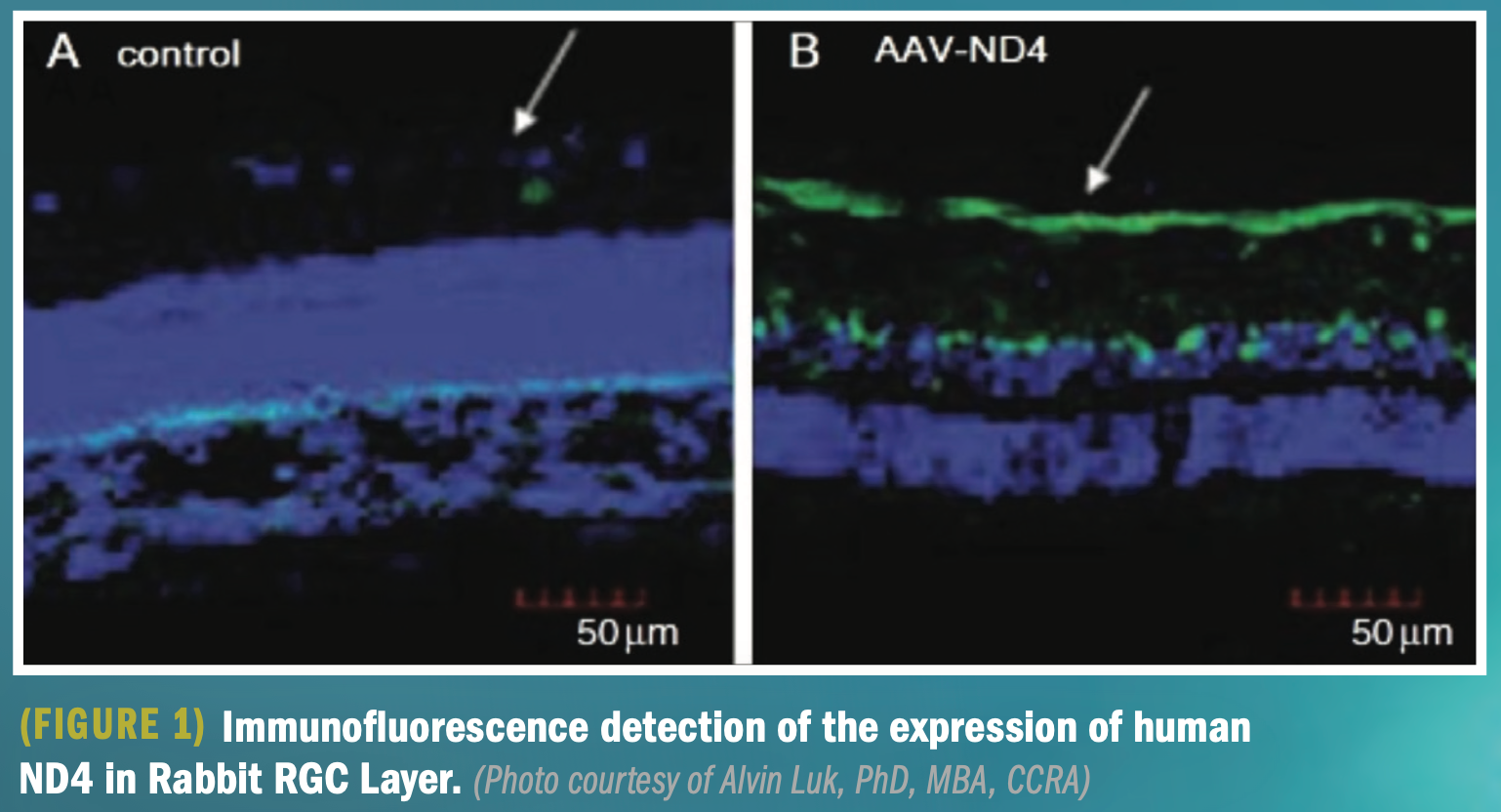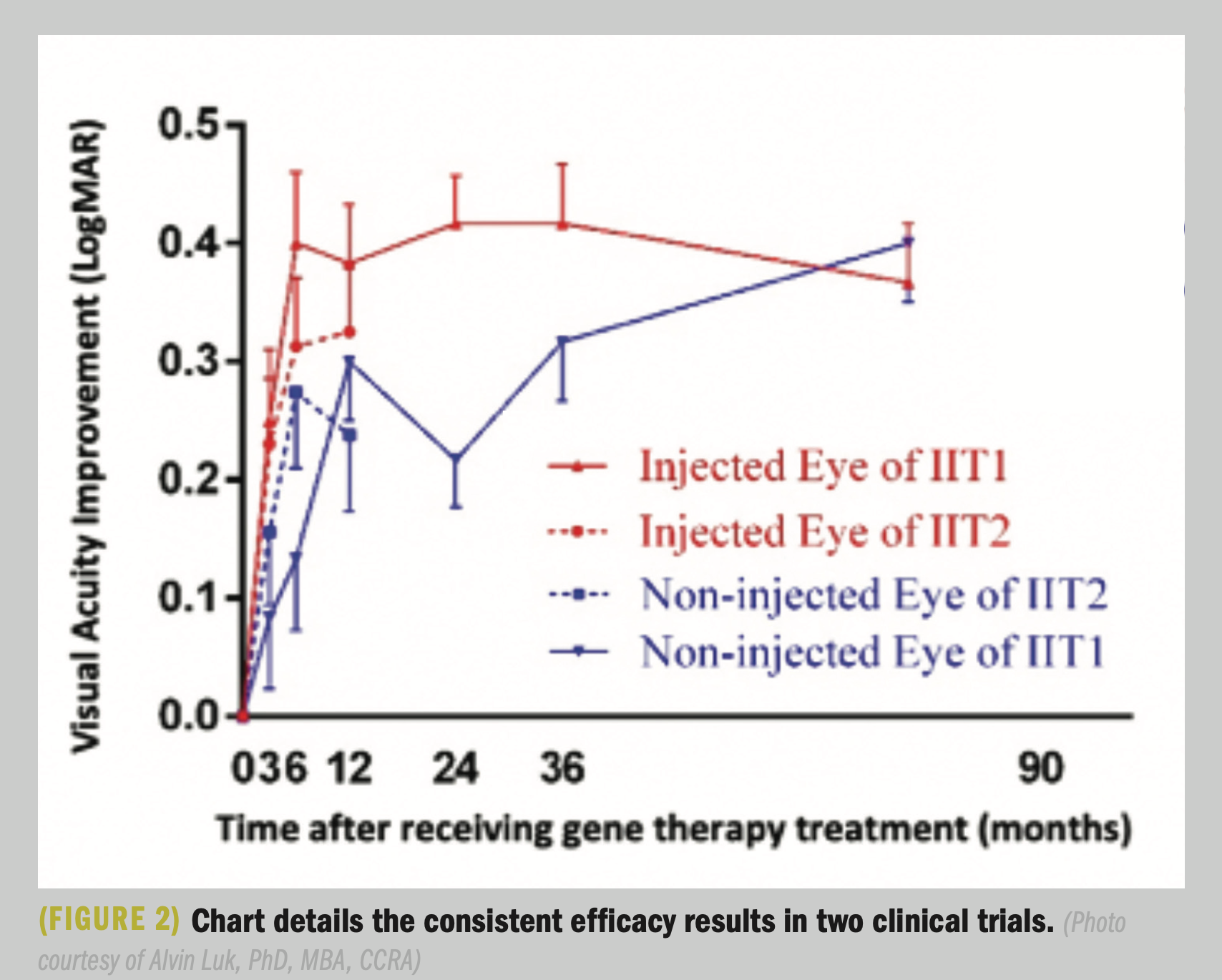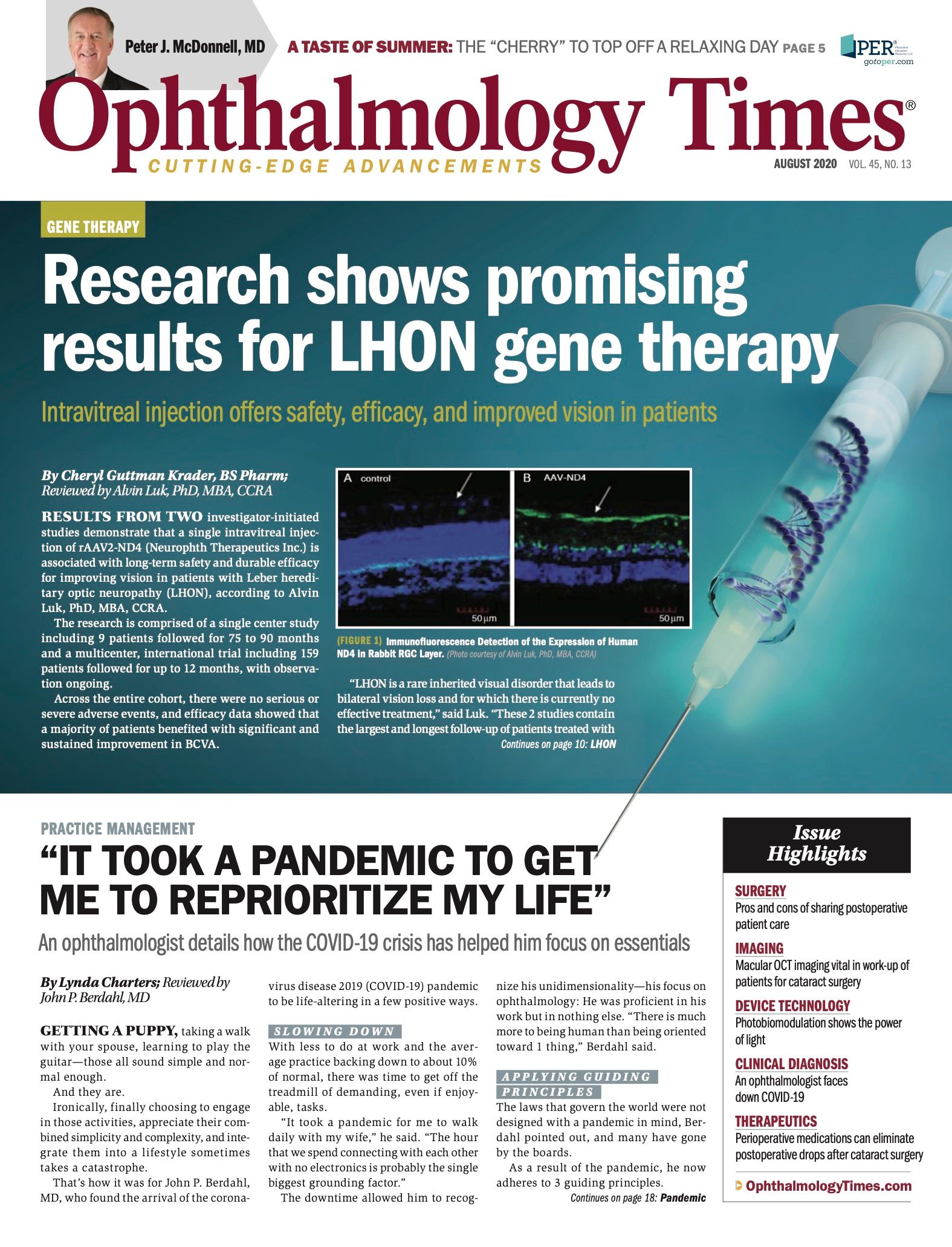Publication
Article
Digital Edition
Research shows promising results for LHON gene therapy
Author(s):
Intravitreal injection offers safety, efficacy, and improved vision in patients

This article was reviewed by Alvin Luk, PhD, MBA, CCRA
Results from two investigator-initiated studies demonstrate that a single intravitreal injection of rAAV2-ND4 (Neurophth Therapeutics Inc.) is associated with long-term safety and durable efficacy for improving vision in patients with Leber hereditary optic neuropathy (LHON), according to Alvin Luk, PhD, MBA, CCRA.
The research is comprised of a single center study including 9 patients followed for 75 to 90 months and a multicenter, international trial including 159 patients followed for up to 12 months, with observation ongoing.
Related: TANGO: Helping target genes produce more protein
Across the entire cohort, there were no serious or severe adverse events, and efficacy data showed that a majority of patients benefited with significant and sustained improvement in BCVA.
“LHON is a rare inherited visual disorder that leads to bilateral vision loss and for which there is currently no effective treatment,” said Luk. “These 2 studies contain the largest and longest follow-up of patients treated with this gene therapy. Based on the results, we are very excited about its potential impact for restoring vision and greater independence for patients with LHON.”
Luk, the CEO at Neurophth Therapeutics Inc., noted gene therapy also is offering a positive impact on treatment.
The gene therapy restores function of the mitochondrial respiratory chain in retinal ganglion cells by delivering the NADH ubiquinone oxidoreductase subunit 4 (ND4) gene.
A series of preclinical studies confirmed that the intravitreal treatment resulted in targeted gene delivery and provided evidence of its safety.
Related: Gene therapy zeroes in as LHON treatment
“Importantly, the confocal microscopy analysis confirms that rAAV2-ND4 reaches the targeted areas in the eyes where the pathological changes of LHON occur,” Luk said. “Therefore, providing support to the hypothesis that treatment with rAAV2-ND4 may alleviate the underlying cause of the vision loss in patients with LHON.”
The clinical studies of rAAV2-ND4 gene therapy reported by Luk have been led by Bin Li, MD, PhD, Tongji Hospital, Huazhong University of Science and Technology, Wuhan, China.

The first study was initiated in 2011. Known as SEE4 LHON (NCT01267422), it included 3 patients aged younger than 12 years who received 0.5 x 1010 vector genome (vg)/eye and six patients aged older than 12 years who were treated with a dose of 1.0 x 1010vg/eye.
According to investigators, the injections were given into 1 eye in an outpatient procedure and had a volume of 0.05 mL.
“Although planned follow-up was initially for 12 months, 8 of the 9 patients have continued follow-up until today,” Luk said.
Related: Study targets ocular damage from chronic intravitreal injections
According to Luk, there have been no late toxicities noted nor any abnormalities in intraocular pressure (IOP) in extensive laboratory testing, which includes assessments of hepatic, renal, and immune function.
Efficacy is being evaluated with measurement of the logarithm of the minimum angle of resolution (logMAR) in best-corrected visual acuity (BCVA).
Luk pointed out that at 3 months post-injection, 8 patients (89%) demonstrated improvement from baseline, and 6 of 9 patients (67%) maintained improvement at 3 years.
They also noted that the BCVA response was maintained at month 70 by 5 of the 6 responders who achieved a mean BCVA gain of 0.68 logMAR.
“Patients in this study also benefited with some improvement in the untreated eye,” Luk said. “This kind of bilateral response was also seen in the second larger trial of this therapy and is consistent with observations by other groups working on gene therapy for this inherited eye disease.”
Based on the encouraging results of SEE4LHON, a larger scale study named 4-HOPE was launched in 2017.
Related: Research targets precision dosing for gene, cell therapy
All patients were treated at three investigational sites in China and 10 patients are continuing follow-up at their local centers in Argentina.
Luk pointed out that the study enrolled 159 patients aged 6 years or older who received a unilateral injection with 1.0 x 1010 vg/eye.
The safety review showed there were no drug-related adverse events. Ocular hypertension was the most common adverse event that patients experienced, but it is related to the course of oral steroid treatment that is given in conjunction with the injection, Luk explained.
“The IOP elevations are generally mild and resolve spontaneously once the steroid treatment is ended,” he said.
Of the 159 enrolled patients, 106 had data available from a 12-month follow-up visit. Of the 106 patients, Luk noted that 63% showed an improvement from baseline BCVA with an average gain of 0.3 logMAR.
Related: Greater IOP-lowering with iStent inject
“It is important to point out that the patients enrolled in this study represent a heterogenous group with a wide range of ages, time since diagnosis, and baseline BCVA values,” Luk concluded. “We would not be surprised to see even better efficacy results in a cohort enrolled using narrower inclusion criteria.”
Luk noted some of the patients in the study also benefited with bilateral BCVA improvement.
Taking improvements ofinjected and noninjected eyes into consideration from baseline to 12 months post treatment, 43.7% patients who classified as legally blind by World Health Organizationcriteria ( > 1.3 logMAR) were recovered to low (> 0.5 to≤ 1.3 logMAR) or normal ( ≤ 0.5 logMAR) vision.
Read more by Lynda Charters
--
Alvin Luk, PhD, MBA, CCRA
e:alvin.luk@neuropth.com
Luk is an employee of Neurophth Therapeutics Inc, but has no other relevant financial interests to disclose.

Newsletter
Don’t miss out—get Ophthalmology Times updates on the latest clinical advancements and expert interviews, straight to your inbox.




